G. Molas
A High Throughput Generative Vector Autoregression Model for Stochastic Synapses
May 10, 2022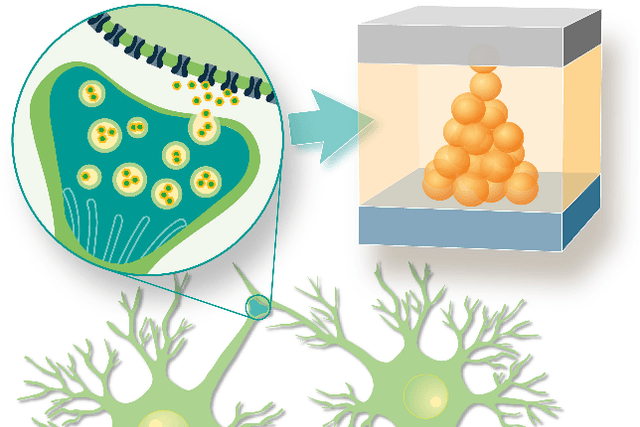
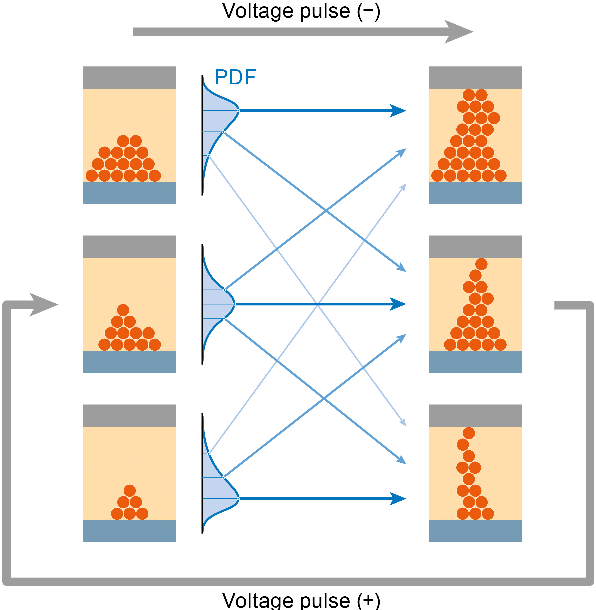
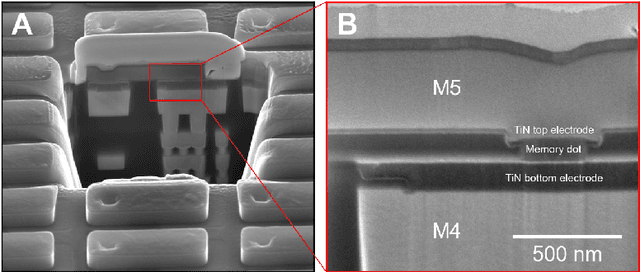
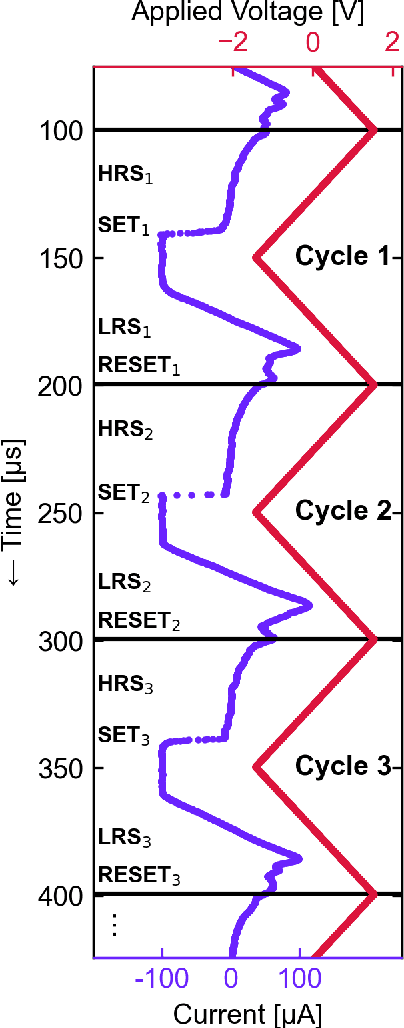
Abstract:By imitating the synaptic connectivity and plasticity of the brain, emerging electronic nanodevices offer new opportunities as the building blocks of neuromorphic systems. One challenge for largescale simulations of computational architectures based on emerging devices is to accurately capture device response, hysteresis, noise, and the covariance structure in the temporal domain as well as between the different device parameters. We address this challenge with a high throughput generative model for synaptic arrays that is based on a recently available type of electrical measurement data for resistive memory cells. We map this real world data onto a vector autoregressive stochastic process to accurately reproduce the device parameters and their cross-correlation structure. While closely matching the measured data, our model is still very fast; we provide parallelized implementations for both CPUs and GPUs and demonstrate array sizes above one billion cells and throughputs exceeding one hundred million weight updates per second, above the pixel rate of a 30 frames/s 4K video stream.
Hardware calibrated learning to compensate heterogeneity in analog RRAM-based Spiking Neural Networks
Feb 10, 2022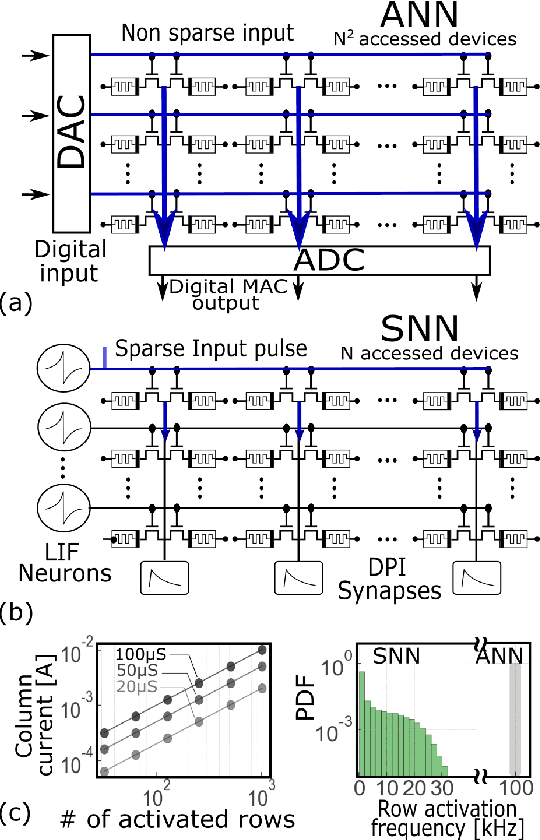
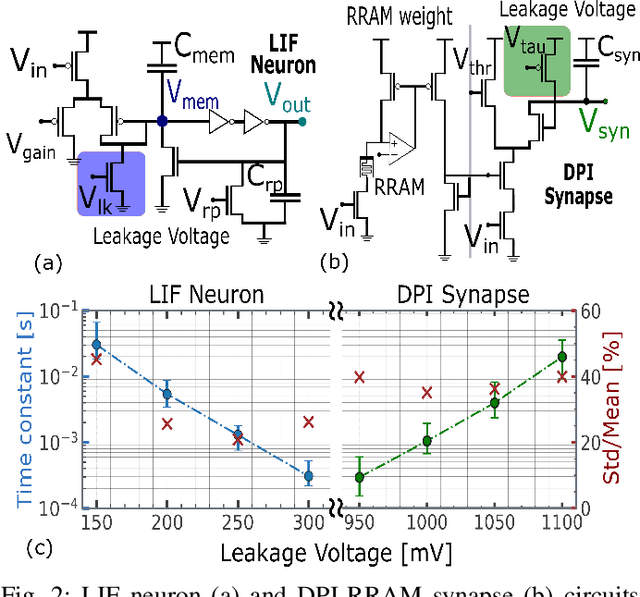
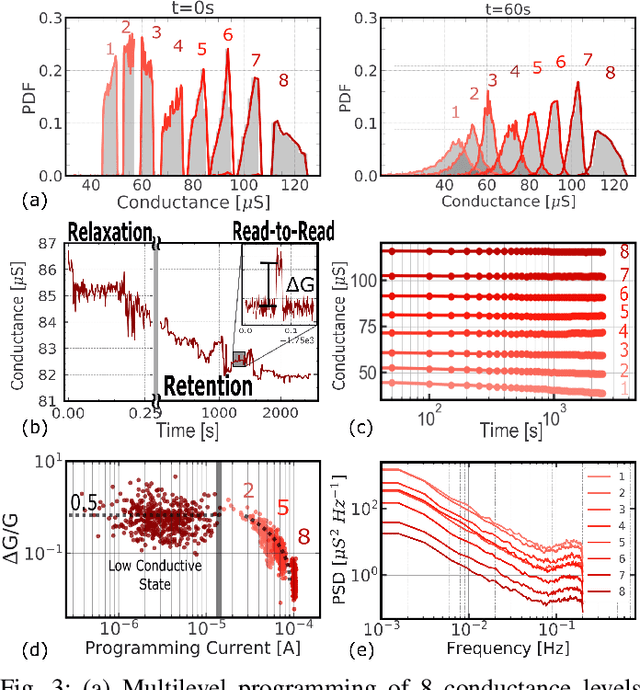
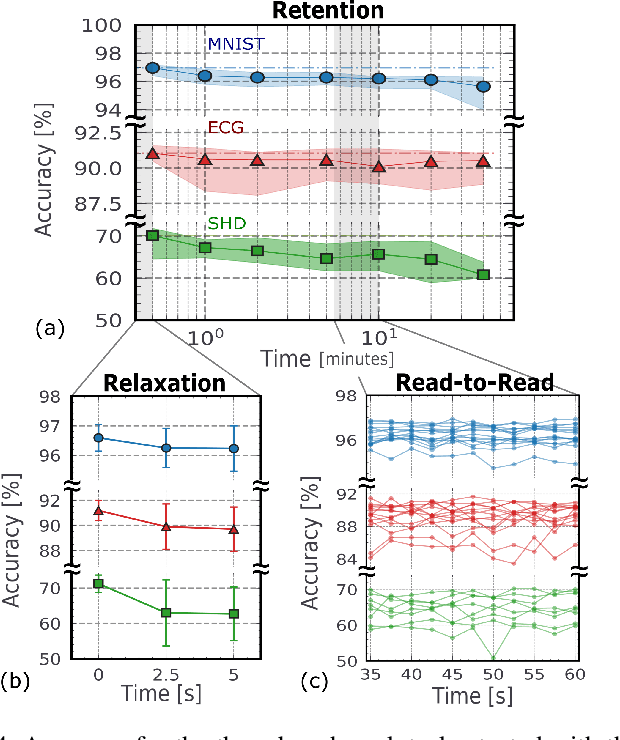
Abstract:Spiking Neural Networks (SNNs) can unleash the full power of analog Resistive Random Access Memories (RRAMs) based circuits for low power signal processing. Their inherent computational sparsity naturally results in energy efficiency benefits. The main challenge implementing robust SNNs is the intrinsic variability (heterogeneity) of both analog CMOS circuits and RRAM technology. In this work, we assessed the performance and variability of RRAM-based neuromorphic circuits that were designed and fabricated using a 130\,nm technology node. Based on these results, we propose a Neuromorphic Hardware Calibrated (NHC) SNN, where the learning circuits are calibrated on the measured data. We show that by taking into account the measured heterogeneity characteristics in the off-chip learning phase, the NHC SNN self-corrects its hardware non-idealities and learns to solve benchmark tasks with high accuracy. This work demonstrates how to cope with the heterogeneity of neurons and synapses for increasing classification accuracy in temporal tasks.
 Add to Chrome
Add to Chrome Add to Firefox
Add to Firefox Add to Edge
Add to Edge